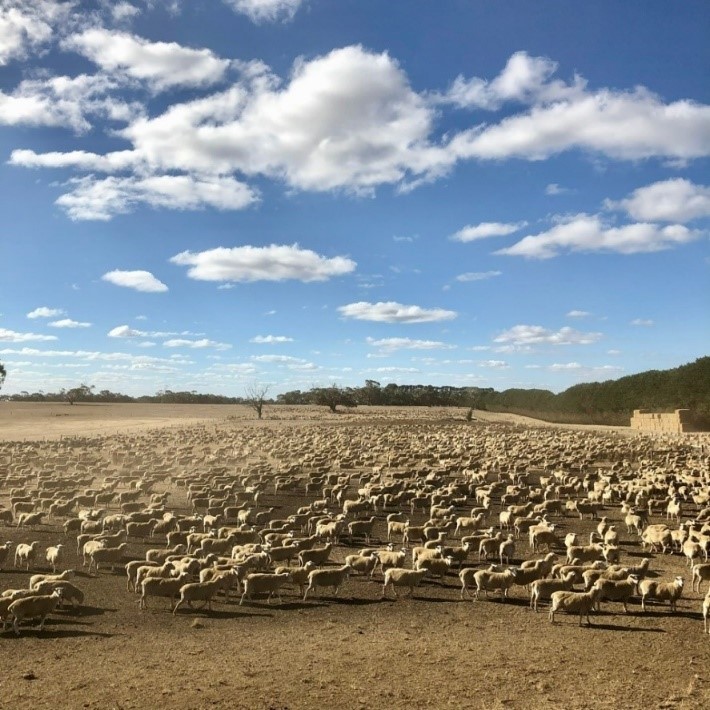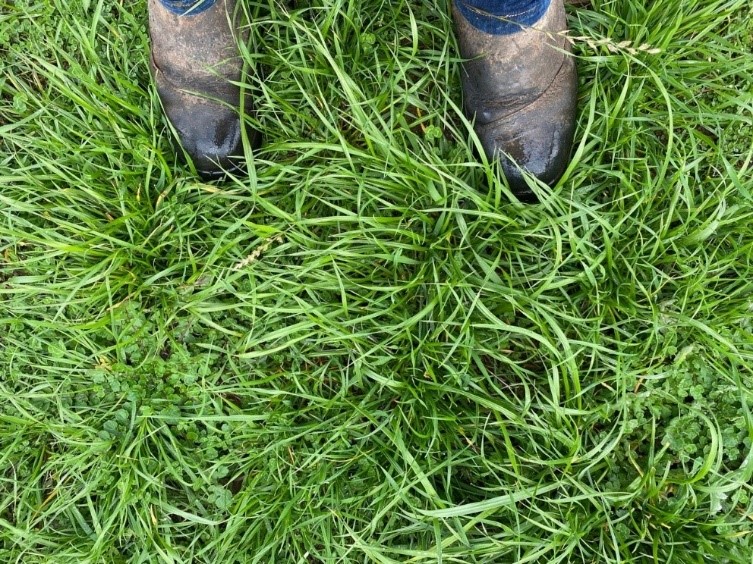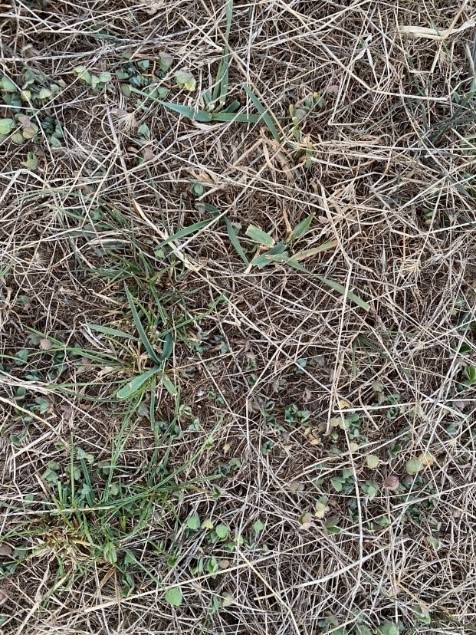Farmer tips on autumn saving
The Glenthompson BestWool/BestLamb group’s autumn saving demonstration was presented in the summer 2019 edition of Sheep Notes (the demonstration was funded by Meat and Livestock Australia and Agriculture Victoria, and run by Andrew Whale).
Autumn saving involves locking up paddocks after the autumn break until feed on offer (FOO) is sufficient for lambing ewes (or other classes of stock). The host farmers found considerable benefits for pasture growth, but also identified challenges in managing sheep in containment after the break. This article provides insights from two producers on how they successfully manage autumn saving every year.
Darren and Kylie Schurmann
Darren and Kylie Schurmann began autumn saving 13 years ago on their 690 ha property ‘Kingaroy’ at Strathkellar, near Hamilton, where they manage 4500 Primeline composite ewes. They use autumn saving annually to establish a feed wedge for lambing and to help manage ewe condition in the lead-up to lambing. They use the practice for all pregnant sheep except for ewe-lambs and ewes carrying triplets.
Why do you autumn save?
Autumn saving enables us to reliably run high stocking rates year-on-year and puts us in control over ewe condition to maximise ewe reproductive potential. We condition score ewes every two weeks in containment and adjust the feed ration to manage their condition.
It allows us to protect leaf area after the break to optimise pasture growth. We also use urea to increase FOO while soil temperature and leaf area are optimal.
We spend far less time feeding stock when in containment and animal treatments are quicker and less stressful for our ewes.
Ewe management
Our ewes are joined at condition score (CS) 3.5 for a four-week joining period and go into their pens immediately after scanning, usually in early April each year. They are allocated to pens depending on whether they need to maintain, lose or increase condition and according to lambing status. The area has nine pens, ranging in size from one and a half to four and a half hectares. They are located within a few hundred metres of sheep yards and feed storage, on a stable, well-drained and sheltered site. We give our ewes as much space as possible in these pens, which works out at around one ewe per 50 square metres.
We aim to have twin-bearing ewes at CS 3–3.2 and singles at no more than CS 2.7 in the lead-up to lambing.
Being able to regulate ewe condition is key to autumn saving and nearly as important to us as the value it offers for bulking up paddock feed. You can get a lot of grief if ewes aren’t in optimal condition, particularly fat composites that will run into issues with difficult and slow births. Now, when we lamb down a mob of ewes, we might only put our hands on one out of 100.
Ewe hoggets go into separate containment areas and are fed a ration with higher protein.
Twin-bearing ewes have the largest and most sheltered pens and are released no later than 14 days before lambing. Our singles are scanned for early/late lambing and are kept in containment until the due date for early-lambing ewes or when we see our first lamb.
Feeding
The ewes are fed hay on Mondays, Wednesdays and Fridays, and barley on Tuesdays, Thursdays and Saturdays. All pens have ad lib straw, and we give our mature twinners a high calcium/magnesium supplement ad lib.
We carry out all pre-lambing treatments three weeks before lambing, in small lot sizes that allow the ewes to be in and out within a few hours.
Before release into their lambing paddocks, the ewes are fed grain in the morning. They are then counted directly into their lambing paddocks. They get three more feeds on alternate days, at full ration, and then two-thirds and one-third of their ration, as they adjust to their lambing paddocks. We also provide at least one fresh bale of straw or hay, depending on the paddock size.
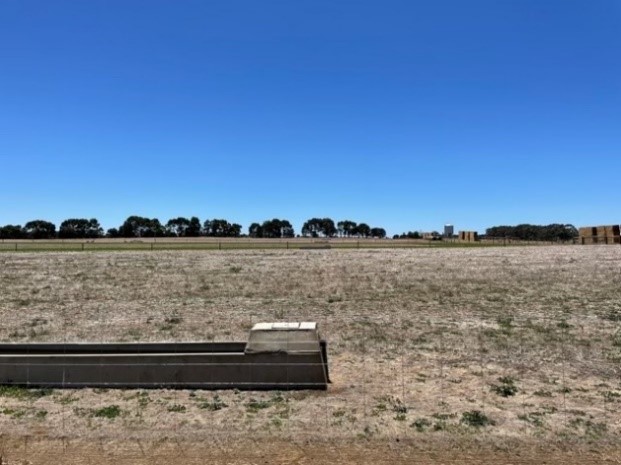
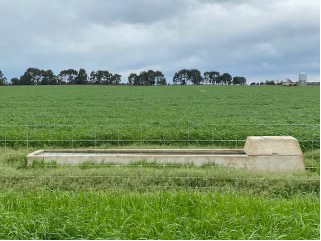
What are your top tips for autumn saving?
- We are autumn saving, not feedlotting or drought feeding, so we give the ewes as much space as we can afford to. One ewe per 50 square metres works for us.
- We feed our sheep on the ground, which can lead to some wastage if it gets wet, so it’s vital to make sure the twinners, in particular, are maintaining condition and getting their required nutrition.
- Resist the temptation to let them out too early, as that will reduce potential FOO. Grass grows grass.
- Feedtest all feeds (except straw).
- Be prepared to be flexible. When severe weather is imminent, we will take twin-bearing ewes out of pens for a couple of days and run them in a few paddocks allocated to singles.
- The pens have multiple benefits. We use them for weaning, inducting lambs for a feedlot, hay production, and feeding lupins to rams and teasers before joining.
- The positives far outweigh the negatives. Most importantly, you are in control.
Andrew and Michelle Edgar
Andrew and Michelle Edgar have been autumn saving on ‘Cuyuac’ at Nareen for five years. Autumn saving helps to manage groundcover over late summer/autumn and build a feed wedge to ensure that FOO targets are reached for lambing through to spring when pasture growth increases.
When do sheep go into containment and in what numbers?
We take our sheep off pastures and use containment pens when groundcover reaches 1000–1200 kg dry matter/ha. The earliest that sheep have gone in is mid-February, although the average would be early March.
All our adult ewes (6000–7000 animals) go into containment, and the ewe lambs stay out. We have six containment pens around 0.7 ha (70 m × 100 m) in size, and we run 1000–1500 ewes per pen, which works out at around 4.5–7 square metres per sheep.
Why do you do it?
Autumn saving allows us to build a feed wedge to ensure adequate feed for lambing. The highest feed demand for our system is in September, when all our lambs are on the ground and starting to eat pasture. Developing this feed wedge means that we have good pasture levels all winter and into early spring. Autumn saving helps us support higher stocking rates.
We also use autumn saving to maintain good groundcover and to protect new pasture shoots.
Having ewes in containment reduces our workload because having all the sheep in one spot halves our feeding time. Time spent mustering for scanning and drenching is also much reduced. It also decreases sheep energy requirements, as less wandering saves energy.
What are your challenges and wins?
Wet conditions after the break are the most challenging situation, particularly if you are feeding on the ground. In the past, we’ve moved mobs to bigger sacrifice paddocks to allow containment pens to dry. We’ve recently built a trough system that can accommodate 1000 sheep at a time. Using rubber belting, we’ve made a 100 m trough for $1200. Twinning ewes will be given ad lib access to self-feeders when pens get wet. If the trough system works well, we will build more. We will also build more pens as we move towards 10,000-plus ewes.
Sheep can be contained for long periods and remain healthy and happy. We have had sheep in containment for up to four months, with no issues. Post-break is the most difficult time, but the most important time to have sheep off pastures as pastures grow and reach our lambing target of more than 1200 kg DM/ha (green).
Water is very important in containment as 6000 ewes can potentially drink up to 60,000 litres in a day. We have installed a Farmbot water sensor, which sends a message to my phone if the tank is dropping rapidly or gets below a trigger point. The water system for the containment area is a 100,000 litre tank filled with an electric pressure pump from a 30 megalitre dam, which is very reliable. We also have a backup solar system on another large dam that can fill the tank if power is out or a problem occurs.
We also use our stock containment areas during scanning and shearing, and for weaning calves. The rams graze the pens when they are not in use for other purposes.
What are your feelings this year, given the great spring and wet summer? Will you still autumn save?
Definitely. At this stage, sheep will be going into containment in early March.
